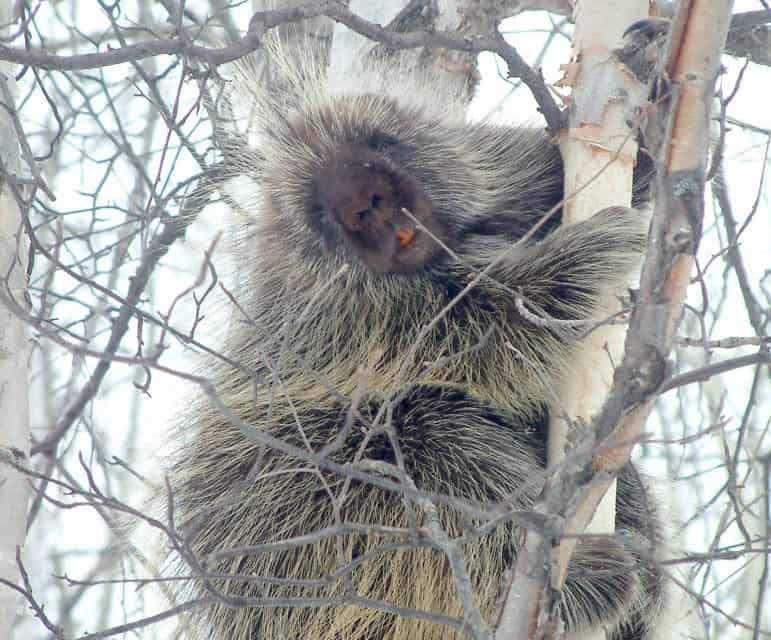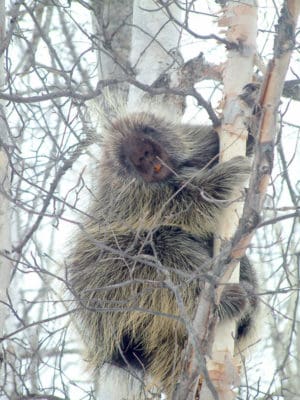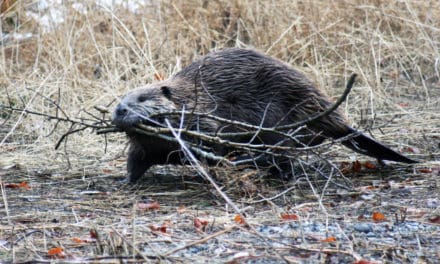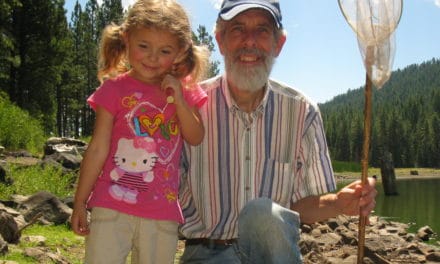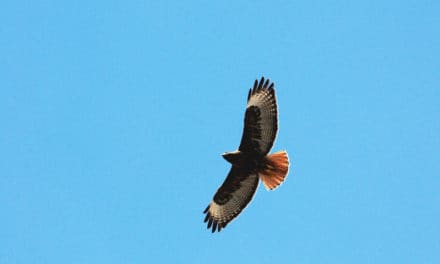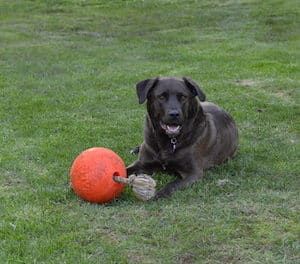by Melissa Wynn
One of my favorite creatures to watch in the woods is the second largest of all rodents, the North American Porcupine. They can be very dangerous when they feel threatened and must never be approached but are quite interesting to observe from afar.
I have been intrigued by the pudgy prickly porcupine since I was a teen. A group of friends and I were on a winter hike and we spotted one gnawing the bark off of the aspen branch it was perched on midway up the tree. One of the boys in our group hit it on the cheek with a small snowball. We all felt terrible for laughing when it wiped the snow from its face with a quick angry swipe from its tiny front paws. I swear it gave us all a crusty look before turning its back on us like a pouting child. I was amazed by the character and personality of this little animal.
North American Porcupines are most active at night but can be seen occasionally during the day snacking in the trees or waddling around the forest floor in search of the leaves, twigs and green plants that make up their purely vegetarian diet. Porcupines don’t move quickly on their fat stubby legs but predators are hard pressed to make a meal of this weapon toting rodent. The long yellowish guard hairs on the front half of the porcupine give it a cuddly terrier look. But 30,000 black tipped, ivory colored, hollow quills on the back half definitely mean business when the wolves, coyotes and mountain lions come calling. Contrary to urban legend, North American Porcupines do not shoot the quills into the attacker. Instead, they cover their face with their forelegs and turn their rump toward the aggressor. When the foolish predator closes in, the porcupine lashes out its tail, stabbing with the barbed quills, deeply embedding them in the paws or face of the enemy. Many of the predators die as a result of these encounters.
North American Porcupines mate in the fall and after seven months have one, and sometimes two, soft quilled babies. The tiny quills harden about an hour after birth, giving these adorable spiky infants a defense system for life. Keeping with the independent Porcupine style, our tiny woodland friends forage on their own, already wearing down their beaver like front teeth that never stop growing. Mother porcupines continue to nurse and nurture until the baby quietly waddles away to its own solitary life at around six months.
I am fascinated by these shy tubby pin cushions of the forest. If you are lucky enough to catch sight of the North American Porcupine in your neck of the woods, quietly watch from a distance and enjoy.
Facts courtesy of nhptv.org and desertusa.com
photo from bigstockphoto.com

